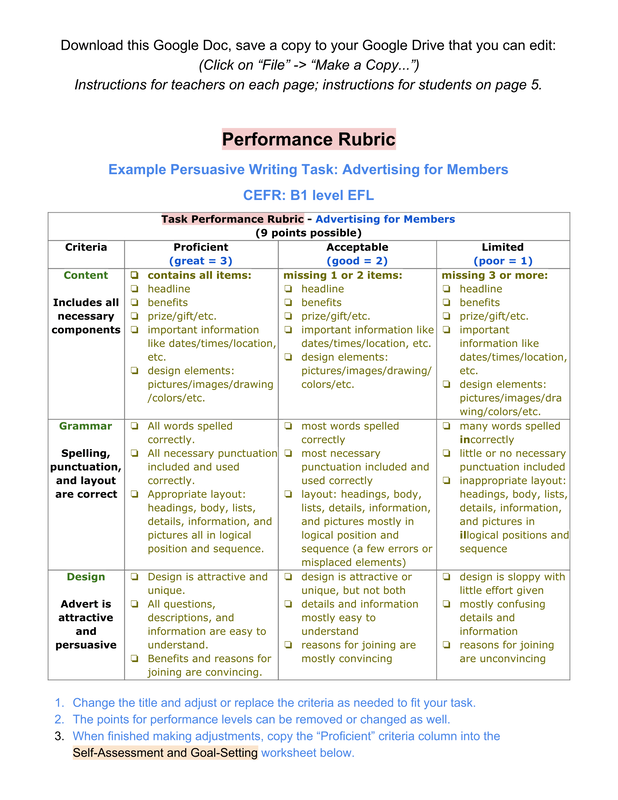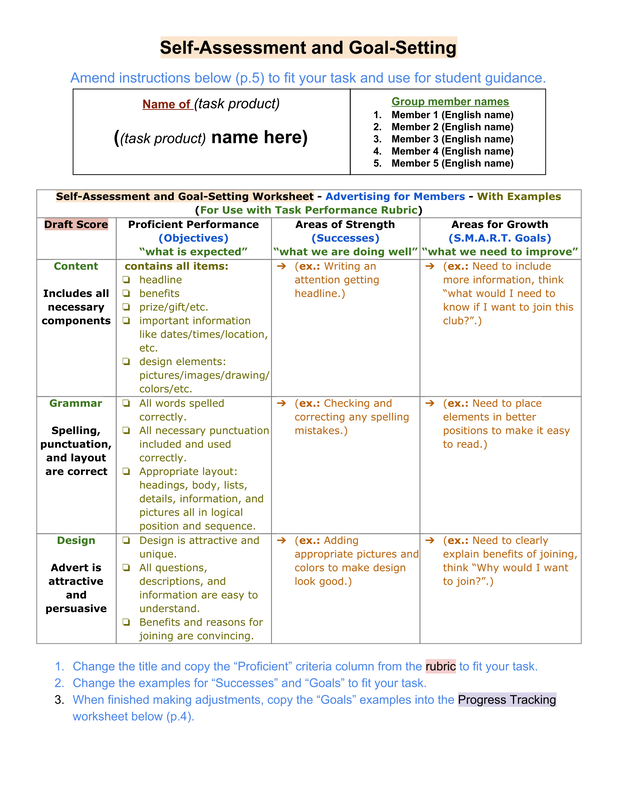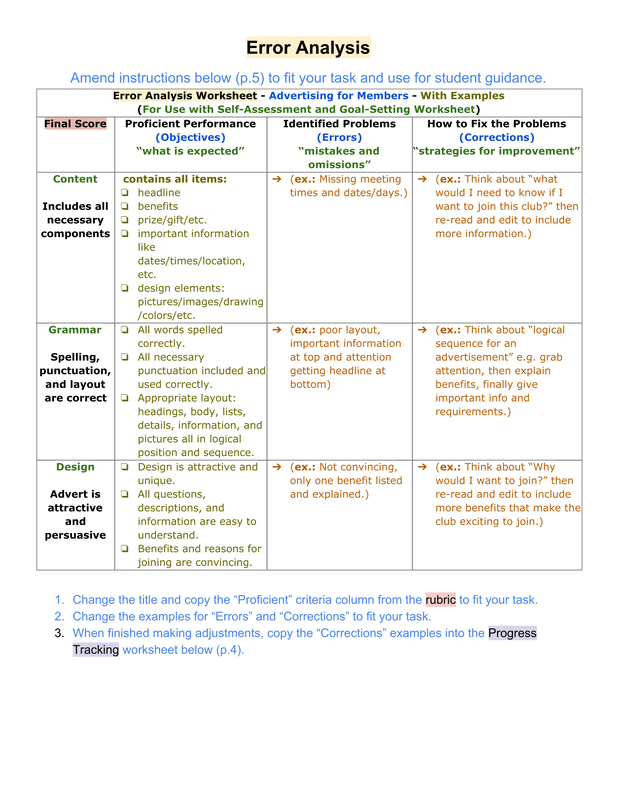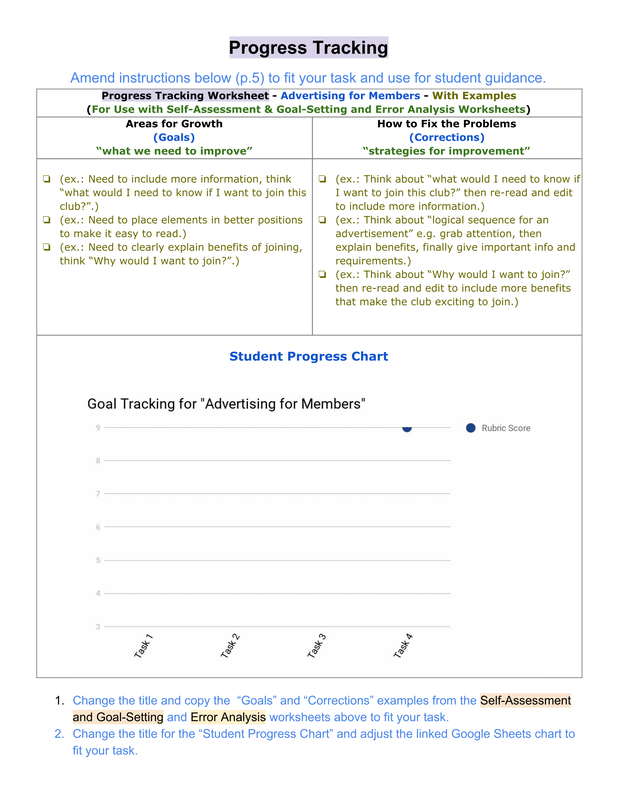| Unityoga.org |
section one |
Templates and Worksheets: |
rubrics and worksheets for student self-reflection
"The standards and learning targets associated with the task must be reflected in the rubric""not only is goal-setting important for students, but developing a plan for reaching the goals is also necessary" |
Introduction:
A modern, standards-based education model calls for continuous assessment to determine student understanding and adjust instruction to meet their needs. Many types of assessment are employed for this purpose as discussed in Section Two, from large-scale standardized tests to quick in-class quizzes or questions to get instant feedback and make adjustments during a lesson. Students must also be able to assess their own work and progress in order to make necessary adjustments to their learning process and become self-regulated learners. Performance Tasks are a kind of activity that can be used to assess student understanding and achievement of course standards in subjects that are not included in standardized tests or as a more "authentic" addendum to the regular testing regime. Presented here is an example of a student self-reflection cycle around a performance task used as an authentic assessment to gauge student attainment of required course standards.
|
Example performance rubric with
|
The standards and learning targets associated with the task must be reflected in the rubric. This example was adapted from Jon Mueller’s Authentic Assessment Toolbox. The rubric can be used by students to assess their own work for strengths and weaknesses, set goals for improvement, and analyze their work for errors and corrections (see worksheets below). A simple style with only three criteria and three performance levels was chosen to facilitate ease of use for ESL students. Creating a rubric together with the students could also be beneficial if time allowed. Customizable templates can be downloaded below.
Romano et al (n.d.) explain that not only is goal-setting important for students, but developing a plan for reaching the goals is also necessary. The rubrics and worksheets enable this important process of goal-setting and developing a plan, while at the same time helping the student to become more self-regulated in their learning. Nicol and Macfarlane-Dick (2006) wrote that students who are self-regulated produce, interpret, and use feedback more effectively to reach their goals. The authors also mentioned that students are able to become more self-regulated with the help of appropriate feedback. The application of rubrics and worksheets as used in this task fits the principles of “good feedback practice” (p. 205) as explained by the authors and so should help to improve the self-regulation practices of the students. Instructions for the use of these worksheets by students (including details for digital management) can be found on the last page of the template document.
press the button for the google doc template |
Example
|
After using the above worksheet to analyze their work for errors and develop "strategies for Improvement", students will implement their plans to edit their work and better align with the rubric criteria (the Progress Tracking worksheet below includes columns to help organize the students' improvement plans). The next step in utilizing the data generated here to its fullest benefit is for students to graph their scores onto the “Student Progress Chart” (see below) in order to visualize their gains in proficiency and reinforce the efficacy of the self-assessment process. Marzano (2009) described research showing large gains in achievement simply by having students track their own progress. This activity can encourage students when they see an improvement as well as reinforce the link between their own efforts and their achievements. These templates can be customized for your performance task and used by students entirely digitally or in printed form according to the instructions found throughout the document.
press the button for the google doc template |
Example procedural rubric with
|
A Procedural Rubric can help students ensure that they are completing all the necessary steps in an assignment or project. Here is an example of a Procedural Rubric for completing the "Self-Reflection Cycle" that has been shown above. The rubric can be customized for the Self-Reflection Cycle associated with any performance task (like the one above) or to contain steps for any procedure.
Instructions for customization are found at the bottom of each template.
Your browser does not support viewing this document. Click here to download the document.
press the button for the google doc template |
Continue to Section Two for information about formative assessment ideas and implementation process.
Assessment and Evaluation Toolkit - navigation
|
Unityoga.org
one Y? one answer... |



